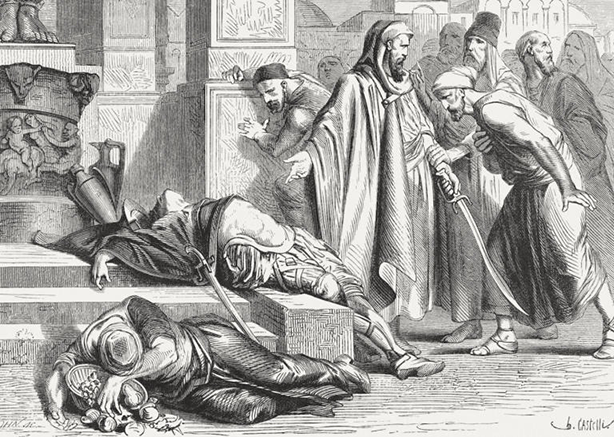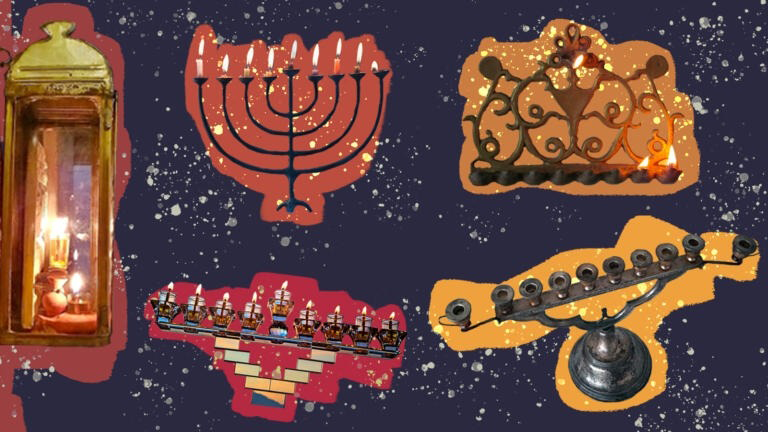(MJL) — Chanukah is a winter holiday that celebrates the victory of the Maccabees over the Syrian Greeks and the rededication of the Temple, as well as the miracle that a little cruse of oil, designed to burn for only one day, kept the Temple menorah alight for eight whole days until more sanctified oil could be produced. The holiday is celebrated with feasting, special Chanukah songs and lighting the Chanukah menorah. These are the primary symbols of the holiday:
Menorah
The Chanukah menorah is designed to evoke the menorah that stood in the Temple 2,000 years ago. The Temple menorah had seven branches, a central branch flanked by three on each side. Most chanukiah mimic this design with a central branch flanked by four branches on each side, the eight side branches symbolizing the eight days that the oil miraculously burned as well as the eight days of celebration. The central flame is called the shamash candle.
A Chanukah menorah is typically lit with candles these days, though the more traditional way to light it is with oil — especially olive oil.
Dreidel
The dreidel is a four-sided top with a different Hebrew letter on each side. The usual story told about the dreidel is that when Jewish learning was forbidden, the Jews would study Torah in secret. When soldiers were approaching, they would quickly hide their books (or, back then, scrolls) and take out the tops and pretend to be involved in a game.
The letters on the dreidel are also symbolic. Around the world, most dreidels have the following four Hebrew letters: nun, gimmel, hey, shin. This stands for the Hebrew phrase nes gadol haya sham, which means “a great miracle happened there” — alluding, of course, to the miracle of Chanukah. In Israel, where the Chanukah miracle took place, the final letter on the dreidel is pey instead of shin for nes gadol haya po (“a great miracle happened here.”)
Latkes and Jelly Donuts (Sufganiyot)
Because of the miracle of the oil, it is traditional for Jews to eat fried foods on Chanukah. The two most popular in the Ashkenazi community are latkes — a fried potato pancake — and jelly donuts (in Hebrew: sufganiyot). Sephardic Jews enjoy a plethora of other fried treats like bimuelos and sfenj.
Star of David (Jewish Star)
This is not really a Chanukah symbol but a Jewish symbol that gets a lot of play during the Chanukah season, perhaps to differentiate Chanukah from Christmas in countries where that holiday is widely celebrated. It turns out, the Jewish star is actually a newer Jewish symbol than you might think. A more ancient Jewish symbol? The menorah.





